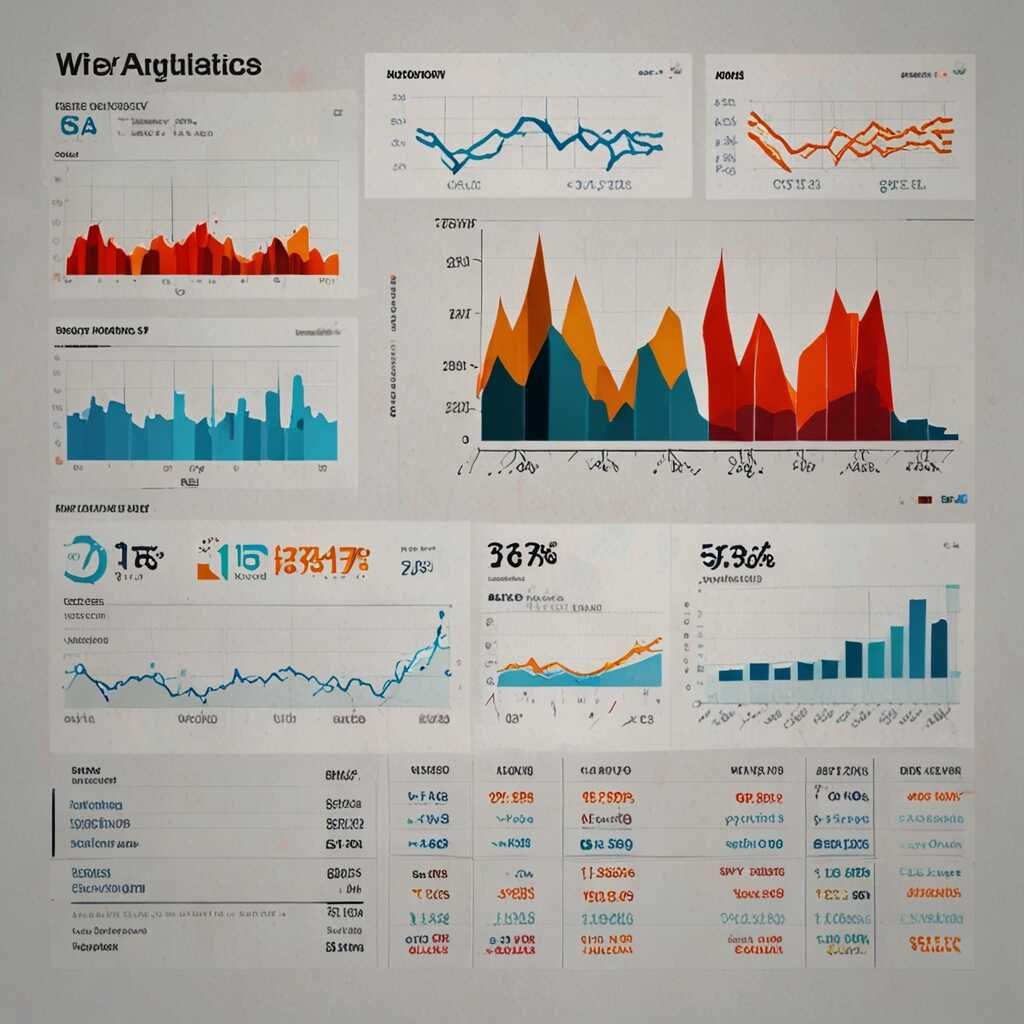Boosting your website’s meta descriptions with ChatGPT strategies can significantly enhance your SEO efforts. By leveraging AI technology, you can create compelling and relevant meta descriptions that attract more clicks from search engine results. At Metrics Rule, we specialize in technical SEO, and we understand how important it is to optimize every aspect of your website—including meta descriptions—for maximum visibility and engagement. In this article, we’ll explore practical techniques to harness ChatGPT for generating insightful and high-quality meta descriptions that can elevate your site’s performance.
Significance of Meta Descriptions in Search Rankings
Meta descriptions play a crucial role in influencing both click-through rates and ranking positions in search engines like Google. A well-crafted meta description helps enhance search engine visibility, leading to higher user engagement. Research shows that meta descriptions directly impact click-through rates; when they are informative and engaging, they encourage users to click on the link instead of others. Various platforms, including SEMrush and Moz, are often used by SEO professionals to analyze and develop effective meta descriptions. For optimal SEO performance, a meta description should ideally be between 150 to 160 characters in length, as this length is proven to display properly in search results without being truncated. Overall, investing time in creating compelling meta descriptions is essential for improving your website’s SEO performance metrics.
Best Practices for Writing Meta Descriptions
To enhance the effectiveness of your meta descriptions, following best practices is essential. First, always include primary keywords relevant to your page content. This helps ensure that search engines accurately index your pages. Make each description unique to avoid duplication, which can hurt SEO rankings. Furthermore, consider employing action-oriented language that encourages user engagement, using phrases like “Discover,” “Learn more,” or “Get started.” Additionally, closely adhere to the recommended character limit of 150-160 characters to ensure your descriptions are fully visible in search results. By implementing these best practices, you can significantly improve search engine visibility and click-through rates.
Utilizing ChatGPT for Crafting Meta Descriptions
Leveraging ChatGPT can significantly enhance your ability to create engaging meta descriptions. By inputting specific keywords and themes, you can generate multiple versions that cater to your SEO needs. For effective results, ensure your meta descriptions are clear, concise, and include essential keywords relevant to your page. It’s invaluable to test different variations with analytics tools to identify which descriptions yield the highest click-through rates. This iterative process is essential to maximize the efficiency of AI-generated content, helping to improve your site’s overall SEO performance.
Best Practices for Creating Meta Descriptions with ChatGPT
To achieve the best results, utilize ChatGPT by focusing your prompts on specific keywords and topics pertinent to your content. Incorporate primary keywords and secondary terms relevant to your audience; this enhances keyword relevance and improves chances in search engines. Aim for meta descriptions that are between 150-160 characters. This length ensures your descriptions are fully displayed in search results while being engaging enough to encourage clicks. Regularly reviewing the performance of these descriptions using analytics tools will help you refine your strategy for optimal performance and ensure that you are fully leveraging ChatGPT’s capabilities.

Selecting Targeted Keywords for Meta Descriptions
Identifying relevant keywords for your meta descriptions is crucial for improving SEO. Start by utilizing keyword research tools like Google Keyword Planner, Ahrefs, or SEMrush to find keywords that align with user intent. Consider what potential visitors are searching for and aim to include long-tail keywords that can attract quality traffic. Keep your keywords focused and ensure they have high search volume and low competition. This targeted keyword approach enhances your chance of ranking higher in search engines.
Tools for Keyword Data Collection
Various tools can help you gather useful keyword data for effective meta descriptions. Tools such as SEMrush and Ahrefs offer features that allow you to analyze competitor keywords and discover search trends. Google’s autosuggest feature also provides insights into common search queries that enhance your keyword list. Consistently evaluating these keywords using monthly data enables you to stay relevant and optimize for changing user behavior. Aim to use 1-2 relevant keywords per meta description, while ensuring the overall length does not exceed 155 characters for best results.
Key Metrics That Influence Search Description Quality
- Google displays around 160 characters of a description in SERPs.
- Meta descriptions can increase click-through rates by up to 5.8%.
- Optimized descriptions can improve rankings indirectly by attracting more visitors.
- 83% of people read meta descriptions before clicking through to a site.
- Over 70% of websites neglect to optimize their meta descriptions.
- Search results with effective descriptions show a 30% higher engagement rate.
- Mobile users account for more than 50% of all web traffic, emphasizing concise descriptions.

Analyzing Successful Meta Description Examples
Effective meta descriptions play a crucial role in driving SEO results. For example, a well-crafted meta description for a travel website may highlight exclusive deals while incorporating phrases like “book now” or “limited time offer.” This helps capture users’ attention and enhances click-through rates. Successful examples often integrate keywords seamlessly, ensuring they resonate with search queries. Research shows that keeping meta descriptions between 150-160 characters is ideal, as it maximizes engagement without being cut off in search results.
Key Features of Engaging Meta Descriptions
Engaging meta descriptions possess specific features that enhance their performance in search engine results. These descriptions typically include essential keywords relevant to the content, giving users a clear understanding of what to expect. A strong call-to-action encourages clicks, while an informative and enticing tone can set a site apart from competitors. For instance, adding phrases like “discover” or “explore” can create an inviting atmosphere. Additionally, successful meta descriptions are crafted to not exceed the optimal length, ensuring they display fully in search engine listings. This combination of keyword integration and strategic wording is crucial in improving SEO and providing users with reliable information, directly leading to higher click rates and site visits.

Avoiding Common Errors in Meta Description Creation
When creating meta descriptions, avoid common errors that can diminish your SEO outcomes. First, ensure that your descriptions do not exceed 160 characters; going over this limit can result in truncation in search results. Second, use unique descriptions for each page; duplicate content can confuse search engines and diminish the reliability of your website. Third, avoid keyword stuffing; while integrating primary keywords is essential, overloading the description can create poor user experience. Instead, focus on natural language that piques interest. Lastly, always include a call to action—this encourages users to click through to your site. By recognizing these meta description errors, you can significantly enhance your website’s performance in search engine rankings.
Understanding Industry-Specific Meta Description Practices
Different industries have unique approaches to meta description optimization. For e-commerce, concise descriptions showcasing product features and offers drive clicks. Blogs, on the other hand, should focus on enticing titles and keywords that promise valuable content, ensuring they connect with their audience. Service providers can emphasize their expertise and customer reviews, turning potential clients into leads. No matter the industry, conducting thorough keyword research is pivotal in tailoring meta descriptions to capture search engine interests effectively. Customizing these strategies not only improves click-through rates but also enhances overall SEO performance in the competitive digital landscape.
Significant Advantages of Crafting Effective Page Summaries
- Improved visibility in search results leads to more visitors.
- Engaging meta summaries encourage users to click on your link.
- Higher relevance in search results boosts website authority.
- Generating unique summaries helps your content stand out.
- Meta descriptions can help communicate your brand message clearly.
- Using ChatGPT makes it easier to generate diverse and fresh descriptions.
- Better descriptions can enhance the user experience across your site.

Implementing A/B Testing for Meta Description Optimization
A/B testing allows website owners to compare different versions of meta descriptions. By analyzing performance, you can determine which version leads to better click-through rates and, ultimately, improved SEO results. Identifying effective meta descriptions requires careful consideration, including extensive testing of various options tailored to your audience. For example, you can test variations like “Get expert SEO services” versus “Boost your website in Vancouver with expert SEO.” Conducting multiple A/B tests, ideally at least 3–5 different pairs, will provide reliable data for refining your approach.
Key Benefits of A/B Testing in SEO Meta Descriptions
A/B testing in SEO meta descriptions offers critical insights into user behavior and preferences. This method allows you to understand which phrasing, keywords, or call-to-action messages resonate most with your audience. By utilizing A/B tests effectively, you can boost your click-through rates significantly. Tracking user engagement and utilizing relevant metrics provides a clear comparison of performance. For a site like Metrics Rule, well-optimized meta descriptions crafted from A/B testing can significantly influence how well your SEO strategies perform, ensuring that your approach is data-driven and effective.
Enhancing AI-Generated Meta Descriptions for Your Brand
To enhance AI-generated meta descriptions, focus on personalizing them to reflect your brand’s voice. Start by customizing the language to match your audience’s preferences. Utilize keywords relevant to your field, ensuring they align with the content of your page. Review existing meta descriptions and compare them to those generated by ChatGPT to identify areas for improvement. Testing various versions will provide data on what resonates best with your audience, leading to better clicks and SEO results. This process of refining meta descriptions will enhance reliability and ensures a consistent brand message.
Best Practices for Crafting Meta Descriptions
When crafting meta descriptions, focus on including between 150 to 160 characters for optimal performance. This length allows for the inclusion of essential keywords without getting cut off in search results. Use clear action words that invite clicks, such as “discover,” “learn,” or “explore.” Tailor your descriptions specifically for your industry—e-commerce descriptions, for instance, should highlight product features and benefits. Ensure you’re regularly testing different phrases and refining your approach based on user engagement metrics. Metrics Rule combines extensive SEO experience and technical knowledge to guide this optimization process effectively.
Notable Brands This Topic Applies to and Their Benefits
- HubSpot provides tools for optimizing metadata, making SEO easier.
- Yoast SEO offers a user-friendly interface for crafting descriptions.
- Moz focuses on detailed strategy and analytics for web optimization.
- SEMrush provides comprehensive data analysis for competing effectively online.
- Wix streamlines website creation and helps with SEO best practices.
- Local businesses benefit from localized descriptions, improving visibility.
- Blogger platforms thrive on engaging descriptions to draw traffic.
Evaluating the Success of Updated Meta Descriptions
To assess the success of revised meta descriptions, focus on tracking essential metrics such as click-through rates (CTR), bounce rates, and average session duration. Monitoring these user engagement metrics helps you understand how well your meta descriptions grab attention and drive traffic. After making updates, check if CTR improves by aiming for an increase of 10-20%. This is a reliable indicator of effectiveness, ensuring your SEO strategy enhances overall performance.
Key Metrics for Assessing Meta Description Performance
When analyzing the impact of updated meta descriptions, several key metrics are crucial. First, compare your pre-update and post-update click-through rates using Google Analytics. Tracking bounce rates reveals how well your content matches user expectations set by the revised descriptions. Average session duration tells you if users are engaging with your content. A performance increase of 10-20% in CTR after updates indicates that your descriptions are effectively capturing interest. This comparison provides ongoing insights that help to refine your SEO strategies further.
